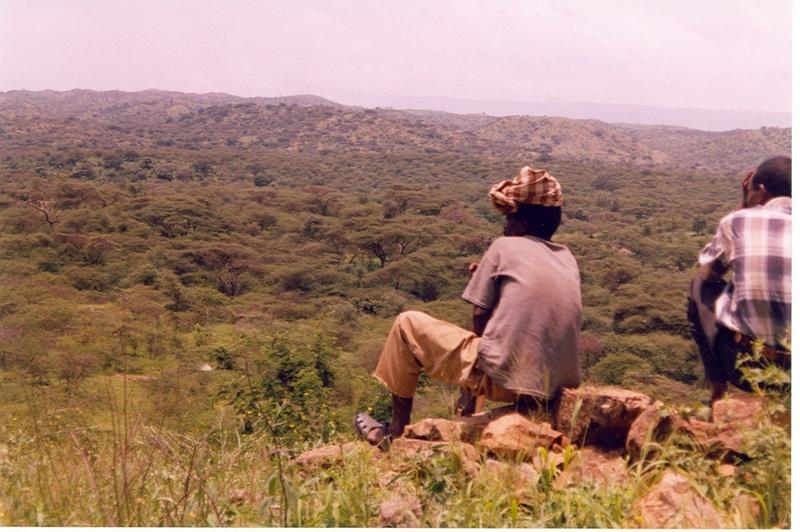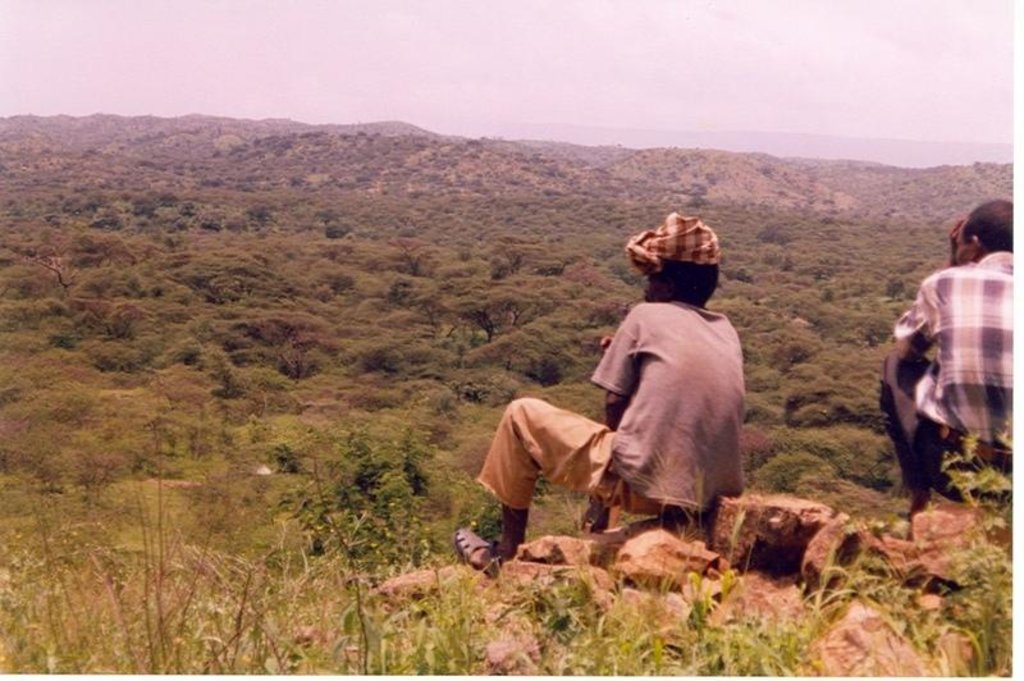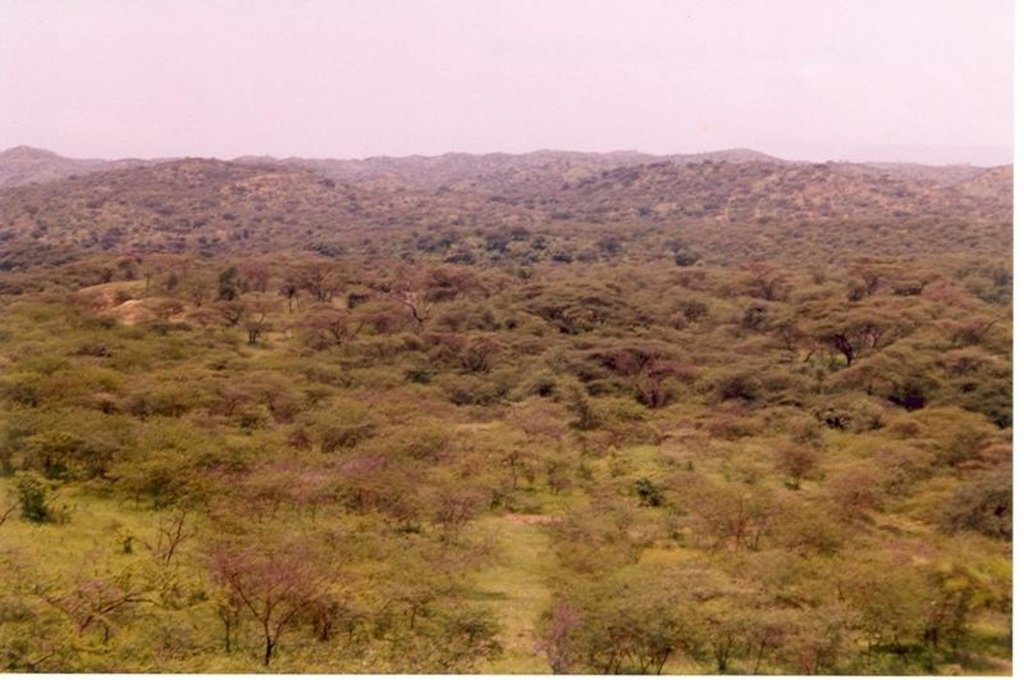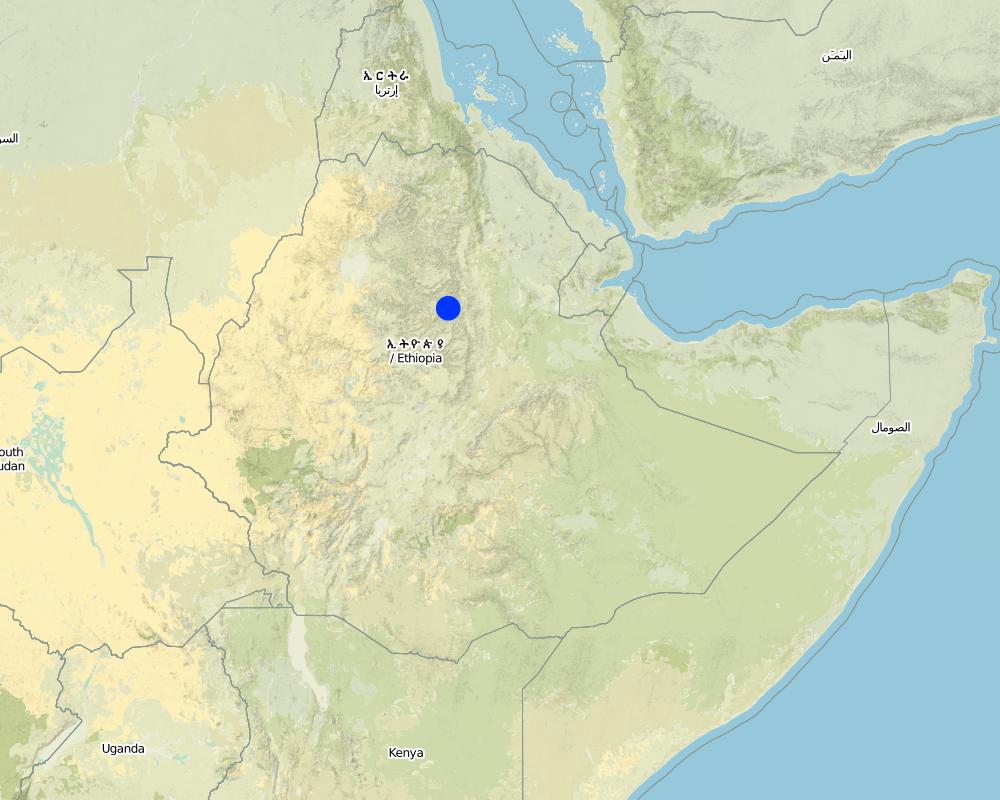Area closure [Ethiopia]
- Creation:
- Update:
- Compiler: Unknown User
- Editor: –
- Reviewers: Fabian Ottiger, Alexandra Gavilano
Bota Klela (Tigrigna)
technologies_1414 - Ethiopia
View sections
Expand all Collapse all1. General information
1.3 Conditions regarding the use of data documented through WOCAT
The compiler and key resource person(s) accept the conditions regarding the use of data documented through WOCAT:
Yes
1.5 Reference to Questionnaire(s) on SLM Approaches (documented using WOCAT)

Project (LLPPA) [Ethiopia]
It is a local level participatory planning approach.
- Compiler: Philippe Zahner
2. Description of the SLM Technology
2.1 Short description of the Technology
Definition of the Technology:
Closure of degraded land is made on land that has lost vegetation cover, has low soil fertility . To speed up the regeneration process applying some SWC activities and enrichment plantation will be necessary.
2.2 Detailed description of the Technology
Description:
The degraded land is closed from human and animal interfrances for at least 3-5 years. Inorder to enhance the rehabilitation rate of the degraded land SWC activities, such as terracing, enrichment plantation and oversowing of grass species is considered. These practices enhances growth of natural vegetation and enriches biodiversity.
2.3 Photos of the Technology
2.5 Country/ region/ locations where the Technology has been applied and which are covered by this assessment
Country:
Ethiopia
Region/ State/ Province:
Tigray
Further specification of location:
Ahferom
Specify the spread of the Technology:
- evenly spread over an area
If precise area is not known, indicate approximate area covered:
- 10-100 km2
Comments:
Total area covered by the SLM Technology is 54.6 km2.
The bush land are closed and in some areas SWC activities were made and enrichment plantation has been done.
Map
×2.6 Date of implementation
If precise year is not known, indicate approximate date:
- more than 50 years ago (traditional)
2.7 Introduction of the Technology
Specify how the Technology was introduced:
- through projects/ external interventions
Comments (type of project, etc.):
From churches and other religious areas
3. Classification of the SLM Technology
3.2 Current land use type(s) where the Technology is applied

Cropland
- Annual cropping
- Perennial (non-woody) cropping
- Tree and shrub cropping
- Rhodes grass, local grasses
- Acacia saligna, grevellia, schinesmolle
Number of growing seasons per year:
- 1
Specify:
Longest growing period in days: 180Longest growing period from month to month: May - Oct
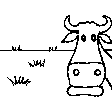
Grazing land
- free grazing
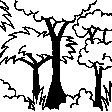
Forest/ woodlands
Products and services:
- Timber
- Fruits and nuts
- Other forest products
- Nature conservation/ protection
Comments:
Major land use problems (compiler’s opinion): Soil erosion, deforestation, degradation, loss of biodiversity, reduction in land productivity
Major land use problems (land users’ perception): Low productivity and decline of soil fertility.
Other grazingland: free grazing
Other type of forest: area rehabilitation: lack of awarness
Problems / comments regarding forest use: In the closed forests enrichment plantation is undertaken. Individual woodlots are planted at homesteads. Currently individuals considered land less, poor and women are given land from the hillsides to plant and enclose them. The purpose is to enable individuals to generate income from it.
3.4 Water supply
Water supply for the land on which the Technology is applied:
- rainfed
Comments:
Water supply: Also mixed rainfed - irrigated
3.5 SLM group to which the Technology belongs
- area closure (stop use, support restoration)
3.6 SLM measures comprising the Technology
3.7 Main types of land degradation addressed by the Technology

soil erosion by water
- Wt: loss of topsoil/ surface erosion
- Wg: gully erosion/ gullying
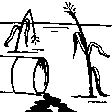
chemical soil deterioration
- Cn: fertility decline and reduced organic matter content (not caused by erosion)
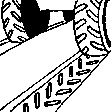
physical soil deterioration
- Pu: loss of bio-productive function due to other activities
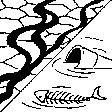
water degradation
- Ha: aridification
Comments:
Main type of degradation addressed: Wt: loss of topsoil / surface erosion, Wg: gully erosion / gullying
Secondary types of degradation addressed: Cn: fertility decline and reduced organic matter content, Pu: loss of bio-productive function due to other activities, Ha: aridification
Main causes of degradation: over-exploitation of vegetation for domestic use (wood cutting), overgrazing (trampling, degraded cover-plant), education, access to knowledge and support services (lack of knowledge)
Secondary causes of degradation: other human induced causes (specify) (agricultural causes), Heavy / extreme rainfall (intensity/amounts) (heavy rainfalls), poverty / wealth (lack of captial), land policy
3.8 Prevention, reduction, or restoration of land degradation
Specify the goal of the Technology with regard to land degradation:
- prevent land degradation
- reduce land degradation
Comments:
Also: rehabilitation / reclamation of denuded land
4. Technical specifications, implementation activities, inputs, and costs
4.1 Technical drawing of the Technology
Technical specifications (related to technical drawing):
Technical knowledge required for field staff / advisors: high
Technical knowledge required for land users: moderate
Main technical functions: control of raindrop splash, control of dispersed runoff: impede / retard, control of concentrated runoff: retain / trap, increase of surface roughness, increase of infiltration, increase / maintain water stored in soil, water harvesting / increase water supply, water spreading, improvement of soil structure
Secondary technical functions: control of dispersed runoff: retain / trap, reduction of slope angle, reduction of slope length, increase in organic matter, increase in soil fertility
Vegetative measure: Vegetative material: T : trees / shrubs, G : grass
Number of plants per (ha): 500
Vegetative measure: Vegetative material: T : trees / shrubs, G : grass
Vegetative measure: Vegetative material: T : trees / shrubs, G : grass
Vegetative measure: Vegetative material: T : trees / shrubs, G : grass
Trees/ shrubs species: Acacia saligna, grevellia, schinesmolle
Grass species: Rhodes grass, local grasses
Terrace: bench level
Vertical interval between structures (m): 2
Spacing between structures (m): 5-8
Height of bunds/banks/others (m): 0.5-0.75
Width of bunds/banks/others (m): 1
Length of bunds/banks/others (m): 300
Slope (which determines the spacing indicated above): 30%
Lateral gradient along the structure: 0%
Vegetation is used for stabilisation of structures.
Change of land use practices / intensity level: area closure
4.2 General information regarding the calculation of inputs and costs
other/ national currency (specify):
Birr
If relevant, indicate exchange rate from USD to local currency (e.g. 1 USD = 79.9 Brazilian Real): 1 USD =:
8.0
Indicate average wage cost of hired labour per day:
0.88
4.3 Establishment activities
| Activity | Timing (season) | |
|---|---|---|
| 1. | Seedling Production | Januray-June |
| 2. | Pitting | May |
| 3. | Planting | Jully |
| 4. | Layout and survey | September |
| 5. | Stone collection | December-may |
| 6. | Foundation excavation and construction | December-may |
| 7. | Awarness creation and site selection | January |
| 8. | Area closed | |
| 9. | Site guard | throughout the year |
4.4 Costs and inputs needed for establishment
| Specify input | Unit | Quantity | Costs per Unit | Total costs per input | % of costs borne by land users | |
|---|---|---|---|---|---|---|
| Labour | Labour | ha | 1.0 | 154.0 | 154.0 | 10.0 |
| Equipment | Tools | ha | 1.0 | 6.5 | 6.5 | 100.0 |
| Plant material | Seeds | ha | 1.0 | 2.0 | 2.0 | |
| Other | Person days | ha | 1.0 | 28.0 | 28.0 | 100.0 |
| Total costs for establishment of the Technology | 190.5 | |||||
| Total costs for establishment of the Technology in USD | 23.81 | |||||
Comments:
Duration of establishment phase: 120 month(s)
4.5 Maintenance/ recurrent activities
| Activity | Timing/ frequency | |
|---|---|---|
| 1. | Planting | Jully /yearly |
| 2. | Weeding | end of August /once |
| 3. | Stone collection | July-august/annual |
| 4. | Construction | July-august/annual |
| 5. | Enrichment plantation | July / annual |
4.6 Costs and inputs needed for maintenance/ recurrent activities (per year)
| Specify input | Unit | Quantity | Costs per Unit | Total costs per input | % of costs borne by land users | |
|---|---|---|---|---|---|---|
| Labour | Labour | ha | 1.0 | 15.0 | 15.0 | 100.0 |
| Total costs for maintenance of the Technology | 15.0 | |||||
| Total costs for maintenance of the Technology in USD | 1.88 | |||||
Comments:
length of structure, site guard/ha, number of seedlings
4.7 Most important factors affecting the costs
Describe the most determinate factors affecting the costs:
labour, slope
5. Natural and human environment
5.1 Climate
Annual rainfall
- < 250 mm
- 251-500 mm
- 501-750 mm
- 751-1,000 mm
- 1,001-1,500 mm
- 1,501-2,000 mm
- 2,001-3,000 mm
- 3,001-4,000 mm
- > 4,000 mm
Specify average annual rainfall (if known), in mm:
650.00
Agro-climatic zone
- sub-humid
- semi-arid
5.2 Topography
Slopes on average:
- flat (0-2%)
- gentle (3-5%)
- moderate (6-10%)
- rolling (11-15%)
- hilly (16-30%)
- steep (31-60%)
- very steep (>60%)
Landforms:
- plateau/plains
- ridges
- mountain slopes
- hill slopes
- footslopes
- valley floors
Altitudinal zone:
- 0-100 m a.s.l.
- 101-500 m a.s.l.
- 501-1,000 m a.s.l.
- 1,001-1,500 m a.s.l.
- 1,501-2,000 m a.s.l.
- 2,001-2,500 m a.s.l.
- 2,501-3,000 m a.s.l.
- 3,001-4,000 m a.s.l.
- > 4,000 m a.s.l.
Comments and further specifications on topography:
Altitudinal zone: 1000-2500 m a.s.l.
Landforms: Also plateua/plains and hill slopes
Slopes on avereage: Also moderate and steep
5.3 Soils
Soil depth on average:
- very shallow (0-20 cm)
- shallow (21-50 cm)
- moderately deep (51-80 cm)
- deep (81-120 cm)
- very deep (> 120 cm)
Soil texture (topsoil):
- medium (loamy, silty)
Topsoil organic matter:
- medium (1-3%)
- low (<1%)
If available, attach full soil description or specify the available information, e.g. soil type, soil PH/ acidity, Cation Exchange Capacity, nitrogen, salinity etc.
Soil depth on average: Also moderately deep, deep and very shallow
Soil texture also coarse/light and fine/heavy
Soil fertility is low-medium
Soil drainage/infiltration is medium-good
Soil water storage capacity is low-medium
5.6 Characteristics of land users applying the Technology
Market orientation of production system:
- subsistence (self-supply)
Off-farm income:
- 10-50% of all income
Relative level of wealth:
- poor
- average
Indicate other relevant characteristics of the land users:
Population density: 200-500 persons/km2
Annual population growth: 3% - 4%
70% of the land users are average wealthy and own 70% of the land.
25% of the land users are poor and own 25% of the land.
5% of the land users are poor and own 5% of the land.
Off-farm income specification: Food for work
5.7 Average area of land used by land users applying the Technology
- < 0.5 ha
- 0.5-1 ha
- 1-2 ha
- 2-5 ha
- 5-15 ha
- 15-50 ha
- 50-100 ha
- 100-500 ha
- 500-1,000 ha
- 1,000-10,000 ha
- > 10,000 ha
5.8 Land ownership, land use rights, and water use rights
Land ownership:
- state
6. Impacts and concluding statements
6.1 On-site impacts the Technology has shown
Socio-economic impacts
Production
fodder production
Comments/ specify:
Cut and carry
fodder quality
wood production
production area
Comments/ specify:
Reduction of grazing land
Income and costs
farm income
Socio-cultural impacts
community institutions
SLM/ land degradation knowledge
Ecological impacts
Soil
soil moisture
soil cover
soil loss
Biodiversity: vegetation, animals
animal diversity
Comments/ specify:
Wild life increase. On the other hand this also led to danger of wild life on crops and domestic animals
Climate and disaster risk reduction
wind velocity
Other ecological impacts
Biodiversity
Soil fertility
6.2 Off-site impacts the Technology has shown
reliable and stable stream flows in dry season
downstream flooding
downstream siltation
Soil fertility
6.4 Cost-benefit analysis
How do the benefits compare with the establishment costs (from land users’ perspective)?
Short-term returns:
very positive
Long-term returns:
positive
How do the benefits compare with the maintenance/ recurrent costs (from land users' perspective)?
Short-term returns:
positive
Long-term returns:
positive
6.5 Adoption of the Technology
Of all those who have adopted the Technology, how many did so spontaneously, i.e. without receiving any material incentives/ payments?
- 0-10%
Comments:
100% of land user families have adopted the Technology with external material support
180000 land user families have adopted the Technology with external material support
Comments on acceptance with external material support: estimates
There is a moderate trend towards spontaneous adoption of the Technology
Comments on adoption trend: because the benefits obtained are convincing and many land usrs want to practice it either individually, in groups or at a community level.
6.7 Strengths/ advantages/ opportunities of the Technology
| Strengths/ advantages/ opportunities in the land user’s view |
|---|
| Rehabilitating the degraded land |
| Increase grass and fodder for livestock |
| Obtain wood for fuel |
| Strengths/ advantages/ opportunities in the compiler’s or other key resource person’s view |
|---|
|
Rehabilitation of the degraded land How can they be sustained / enhanced? Developing bylaws to keep the area and to use benefits out of it |
|
Increase biodiversity How can they be sustained / enhanced? Enrichment plantation |
|
Decrease soil erosion How can they be sustained / enhanced? Constructing SWC techniques wherever necessary |
| Increasing feed and forage |
| Habitate for wild animals |
6.8 Weaknesses/ disadvantages/ risks of the Technology and ways of overcoming them
| Weaknesses/ disadvantages/ risks in the compiler’s or other key resource person’s view | How can they be overcome? |
|---|---|
| Lack of land use policy | facilitate to develop and implement national policy |
| Lack of awarness | creat awarness of stackholders at various level |
7. References and links
7.1 Methods/ sources of information
7.2 References to available publications
Title, author, year, ISBN:
Meret
Links and modules
Expand all Collapse allLinks

Project (LLPPA) [Ethiopia]
It is a local level participatory planning approach.
- Compiler: Philippe Zahner
Modules
No modules


